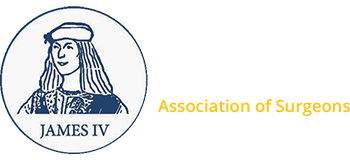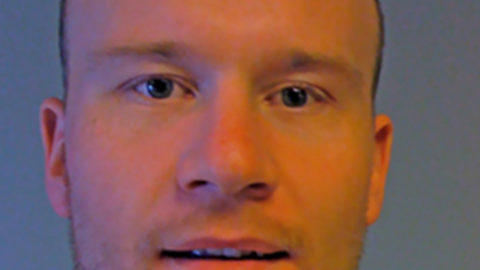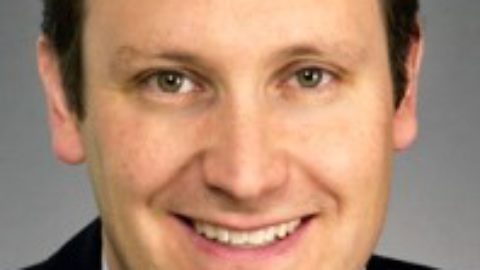I was thrilled when I was notified that I had been honored as a James IV Traveller joining a group of individuals from my university including Drs Angus McLachlin, Dave Grant, John Duff, Vivian McAlister and Ken Harris. Iâd like to personally thank my former chief, Ken Harris, for putting my name forward and advising me as I developed my travel plans. In the end I decided to split my travels into two periods, a two week visit to England and an almost 4 week visit to New Zealand and Australia. I was impressed by the hospitality of all my hosts and their willingness to have me visit their centers.
This proved an outstanding experience. I met fascinating individuals with which I have begun to collaborate with and will remain in touch with for the rest of my career. Some have even visited my center since my travels.
The following includes a brief description of my James IV travels:
London, England (May 2011)
I had decided to split my travels into two periods of time with my first visit being to the Imperial College in London, England where my host was Professor Lord Ara Darzi. Lord Darzi is a general surgeon who developed many of the innovative laparoscopic and less invasive technologies that our patients benefit from today. He was also at the forefront of simulation technology and its role in medical education and the development of simulation centers. More recently he has developed the Institute of Global Health Innovation (IGHI) within Imperial College and a team of health policy analysts and advisors that are involved in projects around the world. Lord Darziâs expertise in health policy was recognized by Prime Minister Tony Blairâs government when he was appointed to the House of Lords and contributed to significant reforms in the British National Health Service, at the same time as continuing to practice as a surgeon and lead a busy and academically productive surgical department.
My visit to London and Imperial College passed quickly as I was warmly welcomed and shown many of this groupâs impressive accomplishments. Lord Darzi was very generous with his and his teamâs time. I had the opportunity to meet with the IGHI Health Policy Team and was given an overview of the IGHI and Center for Health Policy. Their various ongoing projects were fascinating and ranged from advising on cancer care in the Middle East to setting up a health care service in Russia. The Health Policy team (Michael Macdonnell, Peter Howitt and Dom King) were truly impressive and justifiably proud of their accomplishments to date. These meetings opened my eyes regarding some of the challenges, but also opportunities, for health care provision worldwide.
Furthering the role of simulation in surgical education is a major strength and interest of the Lord Darziâs Imperial College group. I was exposed to various forms of these efforts including a Virtual Worlds demonstration and a tour of the VR lab, a display of a distributed simulation in the blow-up theatre, a demonstration of NIRS technology and eye tracking. Specific to my specialty of vascular surgery was a demonstration of the vascular robot and ORCAMP that was kindly led by Celia Riga.
During my visit to Imperial College I gave a research presentation describing some of our experience with practically relevant research regarding abdominal aortic aneurysms. This was well attended by the members of the IGHI, simulation teams as well as clinical personnel. The audience seemed to appreciate our efforts and struggles with health policy and funding issues back home, as well as the increasing utilization of simulation in Canadian surgical training.
I then spent time with the Vascular Surgery team at Imperial College led by Professor Nick Cheshire. Nick was very hospitable, as was Colin Bicknell who took time out of his schedule to make sure I didnât get lost. I participated in vascular surgery rounds and case presentations and was impressed by the complexity of cases seen in this major referral center. The clinical highlight of the visit was observing a case performed by Dr Hazim Safi from Houston who had been brought in to operate on a young man from Greece with an aortic coarctation. It was an impressive OR that day, a Greek patient, American and British surgeons and a Canadian observer, an experience I wonât soon forget.
New Zealand (August 2011)
I spent the good part of a week traveling to several centers in New Zealand on both the north and south islands. Arrived in Auckland in the early morning hours after a long trans-Pacific flight and having enjoyed the outstanding service of Air New Zealand. A little hint to anyone who hasnât traveled with this airline, this is one pre-flight safety video that you want to pay attention to. Apparently there are several, but this one centered on the Kiwiâs passion, the sport of rugby and with the World Cup of Rugby being hosted in New Zealand later in September and October, this video was especially enthusiastic. Auckland is the largest city in New Zealand and home to 1.4 million, or one third of the countryâs entire population. I arrived during their winter and the temperatures ranged from 3 â 12oC. During my stay in Auckland I participated in a dinner symposium with physicians, nurses and trainees from the Auckland City Hospital, including Andrew Hill, vascular surgeon, and Andrew Holden, interventional radiologist, who via a team approach have developed significant expertise in endovascular aortic therapies. This collaborative approach certainly resonated with me as itâs similar to that employed at our institution. Professor Hill gave a talk describing his experience with endovascular repair of aneurysms with a new stent graft, and Professor Holden presented several cases with challenging anatomy that were confronted with. Their experience is impressive and somewhat different from that at my institution, especially there more aggressive early approach to type II endoleaks and preferential preoperative embolization of the inferior mesenteric artery prior to endovascular aneurysm repair. I then described our experience with endovascular repair of ruptured aneurysms which requires an entire team approach and readily available personnel, expertise, and infrastructure at all hours of the day and night. Although physicians in Australasia have embraced endovascular aortic therapy to at least the extent of their North American counterparts, my impression was that they have not done so with ruptured aneurysms, primarily because of the problems with availability of qualified personnel. There followed extensive discussion regarding these hurdles and strategies to rectify them. I was struck by the similarities between the clinical challenges vascular surgeons face in different geographic areas and the differences between the local logistics of our practices.
During my stay in Auckland I had a short period of time to tour this beautiful city. The hospitality was so great that my hosts arranged a snowfall, Aucklandâs first in 70 years. A great view of the city and surrounding region can be seen from the Sky Tower, that overlooks Waitemata Harbor and the campus of the University of Auckland is a beautiful place for a walk, or run, and offers beautiful views of the city as well. After my short visit to Auckland, it was off to the nationâs capital, Wellington, in the southern part of the north island. The weather was cold and rainy but I did tour the city a little and visited the national museum Te Papa, which is the Maori expression for âwhere old treasures are keptâ. I participated in a meeting with the Wellington area vascular surgeons and we had an extensive debate regarding the long term outcomes of open and endovascular aneurysm therapy. I gave a talk describing the challenges of funding new technology, such as endovascular stent grafts, in the Canadian healthcare system. This was well received and also prompted extensive discussion about healthcare economics in our respective countries. Dr. Thodur Vasudevan gave a talk describing his centreâs experience with advanced endovascular cases with thoracoabdominal aneurysms that was especially impressive. There appear to be more similarities, then differences, between these systems in Canada and New Zealand.
The New Zealand system is a government run system with insurance companies as private partners. Health Authorities (27 in all) are tasked with organizing healthcare delivery in their respective regions. The training programs for vascular surgery are common between New Zealand and Australia in that upon successful completion, surgeons can practice in either country. Many of the trainees do spend time in the United Kingdom or Australia during their period of training.
It was then off to the south island and visit with the Christchurch vascular surgeons. Christchurch and just received a major snowfall and is truly a beautiful city, but, as most will be aware, was the victim of a major earthquake recently. Many historic buildings and churches were destroyed irretrievably. I was struck by how arbitrary the damage seemed with upright buildings situated next to piles of rubble. The effects of the earthquake persist with 30,000 people having moved away from Christchurch and reconstruction efforts delayed by continuing aftershocks. I participated in a symposium with the Christchurch and area vascular surgeons, interventional radiologists and trainees and again discussed our experience with endovascular repair of ruptured aneurysms. The Christchurch experience with ruptured aneurysms appears similar to that of the Auckland group and our discussions basically centered around the challenges of implementing a ruptured aneurysm protocol at their hospitals.
Throughout my stay in New Zealand, I felt extremely welcome by these warm and generous people. I would definitely like to visit again, perhaps in the warmer summertime weather. It was now time to leave my new Kiwi friends and colleagues and cross the ditch (Tasman Sea) to the west island (Australia).
Australia (August 2011)
I arrived in Australia and quickly made my way to Adelaide in South Australia where my hosts were Professors Guy Maddern and Rob Fitridge. Professor Maddern is the R.P. Jepson Professor of Surgery at the University of Adelaide and Professor Fitridge is the Head of Vascular Surgery. I couldnât have asked for better hosts as they were truly generous and hospitable. Upon arrival I was generously invited to the Fitridge household for dinner by Rob, and his wife Jen and their two sons.
My family subsequently joined me in Adelaide and our large group (my wife and I and our four kids) were made welcome and given the run of the Maddern beachhouse. This outstanding setting was a perfect introduction for my kids to this beautiful country. Professor Maddern and his family generously hosted my family and the Fitridges at their beautiful house for a welcoming dinner. Despite their jet lag, my family was invigorated and excited by this generosity and hospitality.
During my visit to Adelaide I visited the Queen Elizabeth Hospital and participated in research rounds at the affiliated Basil Hetzel Institute for Translational Research. This Institute is across the street from the hospital and I envied the close proximity as it optimizes collaboration between clinicians and researchers in truly translational research endeavours. It is a set up that is currently lacking at many Canadian institutions. I gave a talk describing practical research with abdominal aortic aneurysms, practical in the sense of health policy, health economics and healthcare delivery perspectives. Among other talks were one by a graduate student describing her work with skeletal muscle ischemia reperfusion. Our basic science laboratory has had extensive experience with this line of research so I was quite interested in this. Professor Fitridge gave a fascinating talk outlining their experience with risk stratification and predictive models with endovascular aortic surgery. I found this especially interesting as this has been a long time interest of mine. I learned a great deal and we discussed several possible opportunities for collaboration and information exchange.
During my visit to Adelaide I also participated in ward rounds at the Queen Elizabeth Hospital with Professor Fitridge and his multidisciplinary team that included physicians, trainees, nurses, social workers and podiatrists. I found the addition of podiatrists to be quite useful especially with those patients with diabetic foot infections, which often prove quite challenging to manage. I also participated in a multidisciplinary case conference with surgeons and radiologists where different approaches to several challenging cases were discussed.
A unique feature of my Adelaide visit was to draw on Professor Fitridgeâs experience with international vascular surgery curriculum for trainees. This is a specific interest of his. Vascular surgery training in Canada has recently changed from a subspecialty of general surgery to a primary specialty, similar to that in Australia. Professor Fitridge is organizing a group to further international curriculum development and we will now participate in this worthwhile project.
After I quickly mastered driving on an unfamiliar side of the road, my family and I did set some time aside to explore Adelaide and the surrounding area. A visit to the Cleland Conservation Center, a short trip outside of Adelaide, gave us the opportunity to walk among the kangaroos, wallabies, koala bears and many other of the unique Australian animals. We also took the ferry across to Kangaroo Island where we spent a day and night exploring the island and saw penguins, sea lions, seals and more kangaroos. Its an area of the country where we were made welcome and where I would visit again anytime, both from the family and the professional aspects.
We then traveled to New South Wales where we spent time in Sydney, home of the world famous Sydney Opera House and Harbour Bridge. My kids and I took surfing lessons at Manley Beach where they were much more successful than I was, without a doubt. While my family explored Sydneyâs well known zoo and aquarium I spent time at the Royal Prince Alfred (RPA) Hospital.
My hosts at the RPA were Professors James May and John Harris who met me for a welcoming tea at the Australia Club. They continued to be outstanding hosts during my stay that included lunch overlooking the rugby pitch on the University of Sydney campus. The RPA is a historic Australian hospital and also has played a major role in the development of endovascular aortic therapies, first under the leadership of Professor May, and then under Professor Geoff White and now under the leadership of Steve Dubenec. I was honoured to give a presentation to their group describing the progression of endovascular surgery in Canada and its effect on surgical training. During my visit, Professor May gave generously of his time and gave me an extensive tour of the hospital. I had the opportunity to participate in two sets of case base rounds, the first with Professor May and the vascular surgery trainees and the second with the entire vascular surgery group. During this second session I gave a talk entitled, âRevisiting a preferential endovascular approach to blunt traumatic injuries to the thoracic aorta.â This was well received, prompted much discussion, and also seemed to reflect the current practice and direction of the RPA group.
Following our Sydney visit it was time to spend some dedicated time with my family. We traveled to Cairns and eventually ended up near Port Douglas in northern Queensland. This was the perfect jumping off point for visits to the Great Barrier Reef and the Daintree Rainforest. These were once in a lifetime family opportunities that I was thrilled to share with my family.




You must be logged in to post a comment.